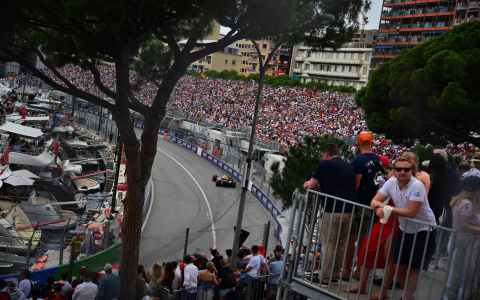Alright, so let me tell you about this little project I got myself into, the “Monte Carlo Airport” thing. It wasn’t some grand plan, just something that kinda popped into my head one afternoon when I was, you guessed it, stuck at an airport. You know how it is, flight delayed, chaos everywhere, and I started thinking, “This whole mess must follow some kind of pattern, right?”

Getting Started: The Big Idea (or so I thought)
So, I figured, airports are basically a series of queues and events that happen with some randomness. Planes arriving, needing a runway, finding a gate, people checking in, going through security. It sounded like a perfect candidate for trying out a bit of that Monte Carlo stuff – you know, using random numbers to see how things might play out. I wasn’t trying to solve world hunger or fix air travel, just wanted to see if I could build a tiny, simplified version of an airport on my computer and watch it run.
My first step was pretty low-tech. I actually grabbed a notepad and started jotting down the main parts of an airport I thought were important for a basic simulation. Things like:
- How often do planes arrive?
- How long does it take for a plane to land and clear the runway?
- How many runways are there?
- How many gates?
- How long does a plane stay at a gate?
I tried to keep it simple. No fancy air traffic control logic, no detailed passenger movements. Just the big pieces.
Diving In: The “Coding” Part (and the headaches)
Then I moved to my computer. I decided to use a pretty straightforward scripting language, nothing too heavy. My goal was to get something up and running quickly, not to write the world’s most efficient code. First, I tackled plane arrivals. I set up a sort of virtual clock and had planes “arrive” at random intervals, based on some average I made up. Easy enough.
Next, the runway. This is where it got a bit more interesting. If a plane arrived and the runway was busy, it had to “circle” – basically, join a queue. I had to track which plane was next, how long they’d been waiting. It was like playing air traffic controller, but with really basic rules.

Then came the gates. After a plane landed, it needed a gate. If all gates were full, tough luck, it had to wait. This created another queue. I made a simple rule: first come, first served. And I had to decide how long a plane would occupy a gate before it was ready to “depart” (which, in my simple model, just meant it disappeared and freed up the gate).
Let me tell you, getting the timing right was a pain. If I made planes arrive too frequently or stay at gates too long, my virtual airport would grind to a halt almost immediately. Total gridlock. Planes circling endlessly, gates all jammed up. It was frustrating! I spent a lot of time just tweaking numbers: “What if planes arrive every 5 minutes instead of 3?” or “What if turnaround time at the gate is 45 minutes instead of 60?” It felt like I was just guessing half the time.
I also tried to add a super simple check-in desk simulation, just to see. A few desks, passengers arriving randomly, forming queues. If the queues got too long, well, my imaginary passengers were probably having a bad day. That part was more of a side experiment, to be honest.
What I Saw: The “Aha!” Moments (sort of)
After running this thing dozens of times, making little changes here and there, I started to see some interesting, if not earth-shattering, things. For example, adding just one extra runway (if I started with one) or a couple of extra gates made a huge difference to the flow. It wasn’t always a linear improvement; sometimes a small change had a big impact on reducing queues.
I also noticed how a small delay in one part – say, planes taking a bit longer to clear the runway – could ripple through and cause much bigger backups at the gates later on. It’s kind of obvious when you think about it, but seeing it happen in my little simulation was pretty neat.

It wasn’t exactly a scientific breakthrough, mind you. My model was crude. So, so crude. I didn’t account for different plane sizes, weather, mechanical issues, baggage handling, security lines in any real detail, or a thousand other things that make real airports complex beasts. This was more like a toy airport.
Wrapping It Up: My Little Airport Experiment
So, that was my journey with the “Monte Carlo Airport.” It was a fun little exercise, mostly to satisfy my own curiosity. I didn’t produce any publishable research or anything close to it. It was more about the process of trying to model something complex in a very simple way, using a bit of randomness to see what happens.
It definitely gave me a new appreciation for the real folks who manage actual airport logistics. My little simulation was a headache at times; I can’t imagine the real thing. But yeah, it was a good way to spend a few evenings, tinkering around and watching my little digital planes try to land and take off without causing too much chaos. Maybe next I’ll try simulating a coffee shop queue during the morning rush. That’s another beast altogether!










